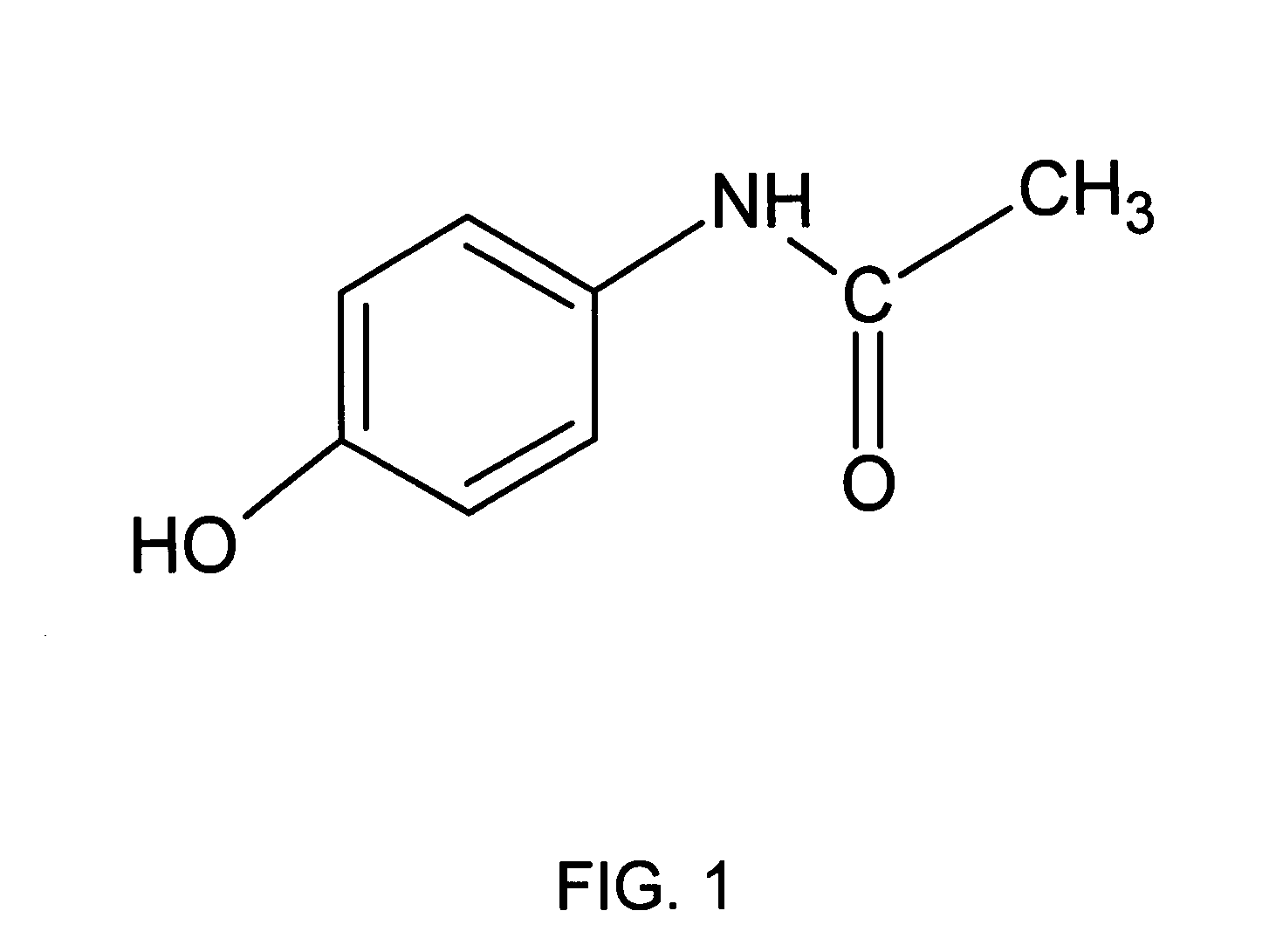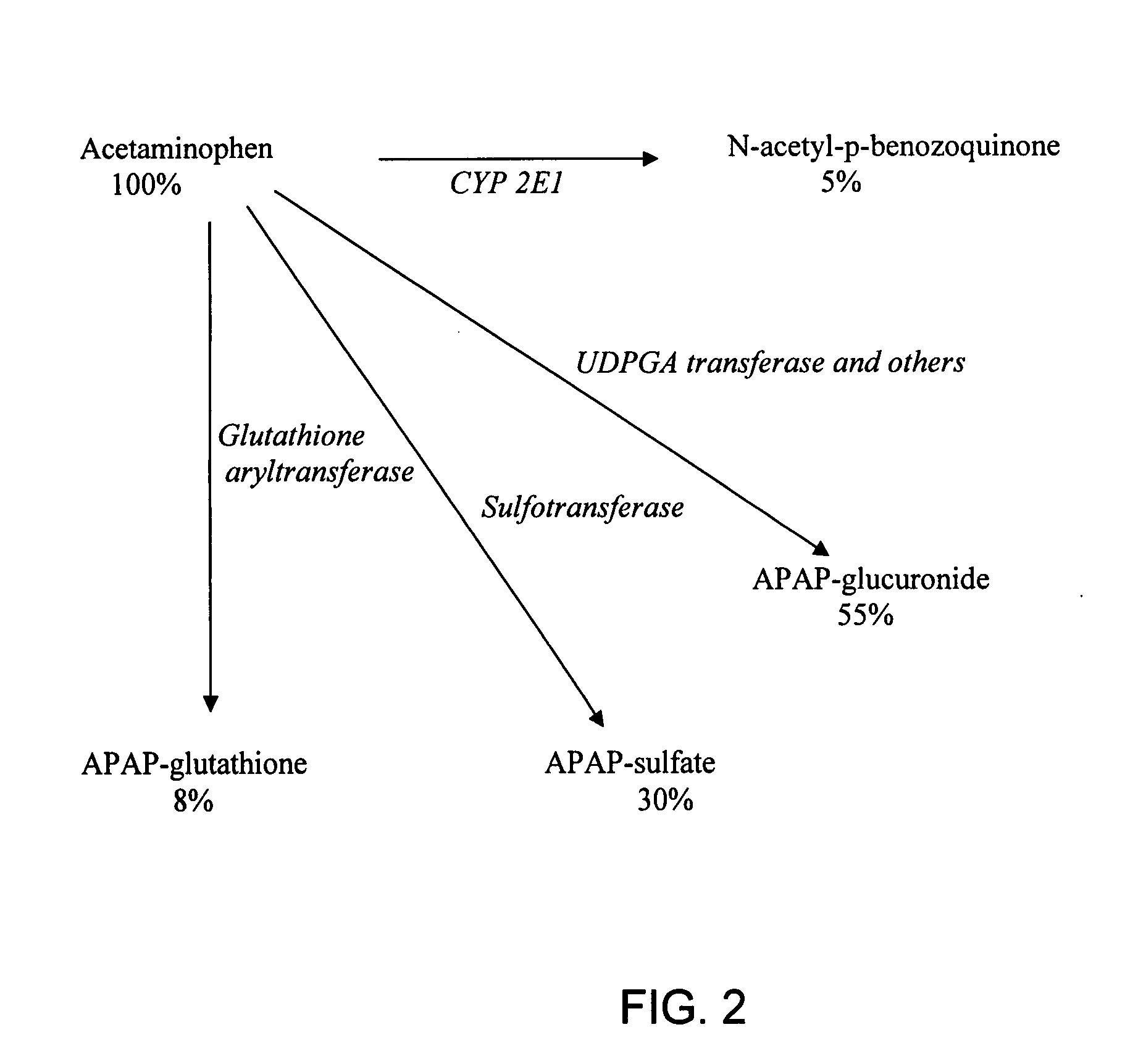Directed metabolism of compounds by glucuronidation and sulfonation donors to decrease toxicity
a glucuronidation and sulfonation donor technology, applied in the direction of biocide, drug composition, animal husbandry, etc., can solve the problems of abnormal susceptibility to the toxic effects of normal levels or doses of these agents, formation of toxic free radical liver inflammation and even liver failure, and hepatic cell injury and death, so as to prevent and treat toxicity and reduce the incidence and degree of liver toxicity
- Summary
- Abstract
- Description
- Claims
- Application Information
AI Technical Summary
Benefits of technology
Problems solved by technology
Method used
Image
Examples
example
Efficacy of Uridine Diphsopho Glucose (UDPG) to Prevent Acetaminophen (APAP)-Induced Toxicity in Mice
[0063]To validate the concept that UDPG can mitigate the toxicity of APAP, a dose-response of APAP toxicity was established for C57B16 / J male mice weighing approximately 20 grams each between the ages of 6 to 10 weeks. In prior experiments in the laboratory, the LD60, of APAP was determined to be about 600 mgs / kg. The molecular weight of APAP is 151; therefore, the LD60, was about 4 mMol / Kg.
[0064]In this experiment, the animals were transferred to newly cleaned cages with mesh floors and fasted for 24 hours. They were divided into two groups of eight mice per group. The mice were allowed free access to water and allowed food 8 hours after the administration of the drugs. Sixteen hours after the fast began, four mMol / kg (600 mg / kg) of APAP, previously dissolved in warm saline to a concentration of 15 mg / ml, was administered intra-peritoneally (IP). At the same time, each animal receiv...
PUM
| Property | Measurement | Unit |
|---|---|---|
| volume of distribution | aaaaa | aaaaa |
| concentration | aaaaa | aaaaa |
| time | aaaaa | aaaaa |
Abstract
Description
Claims
Application Information
 Login to View More
Login to View More - R&D
- Intellectual Property
- Life Sciences
- Materials
- Tech Scout
- Unparalleled Data Quality
- Higher Quality Content
- 60% Fewer Hallucinations
Browse by: Latest US Patents, China's latest patents, Technical Efficacy Thesaurus, Application Domain, Technology Topic, Popular Technical Reports.
© 2025 PatSnap. All rights reserved.Legal|Privacy policy|Modern Slavery Act Transparency Statement|Sitemap|About US| Contact US: help@patsnap.com



